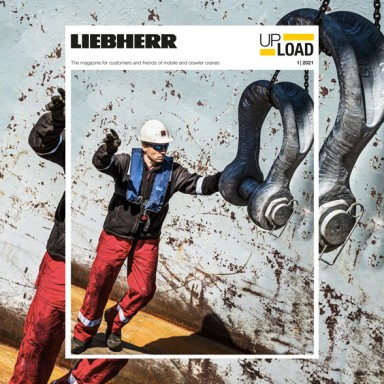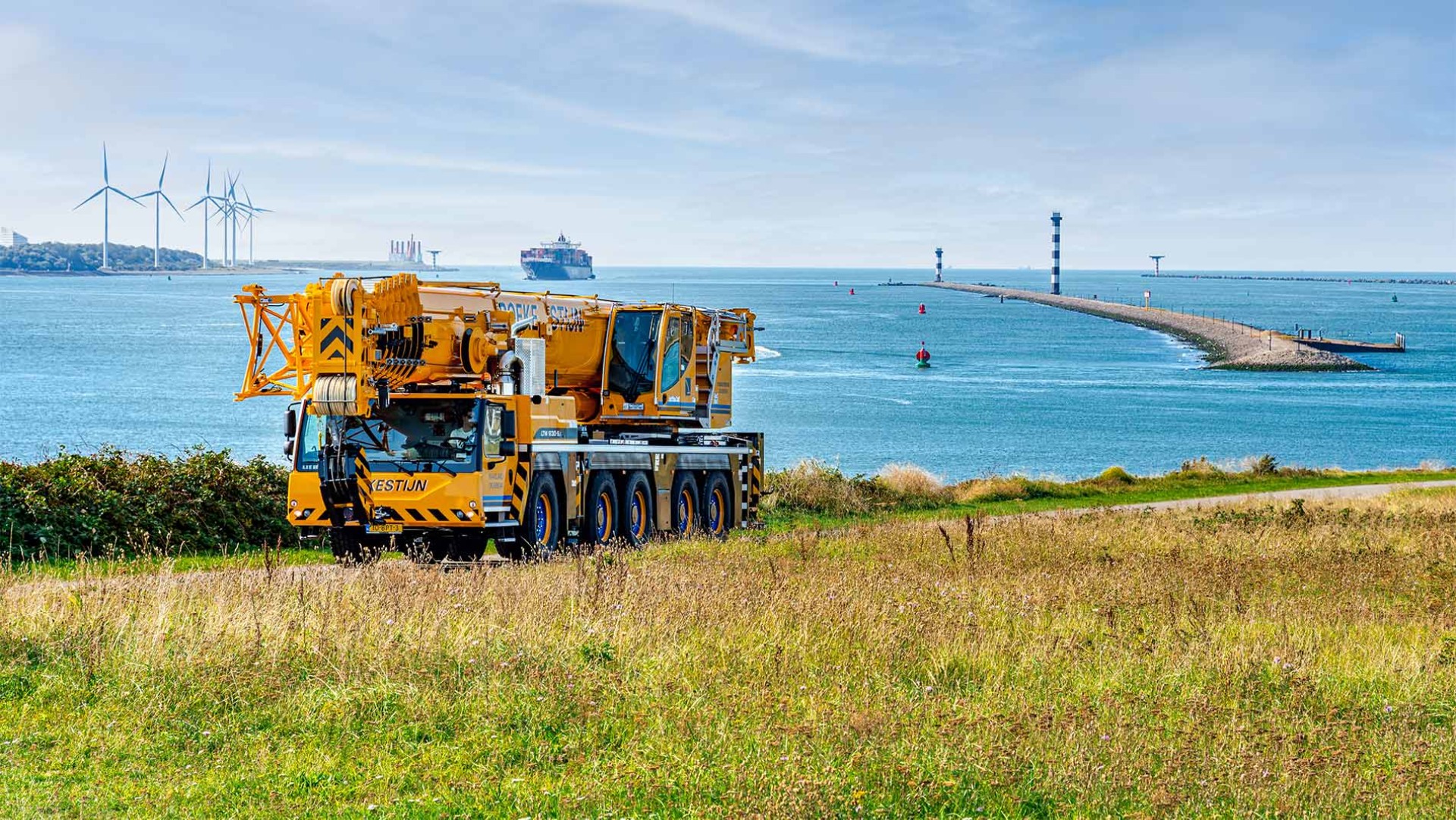
8 minutes | magazine 01/2021
The Netherlands – an El Dorado for crane fans in Europe
On average and relative to the population, there are more than twice the number of our mobile cranes on the roads and sites of the Netherlands than anywhere else on the continent.
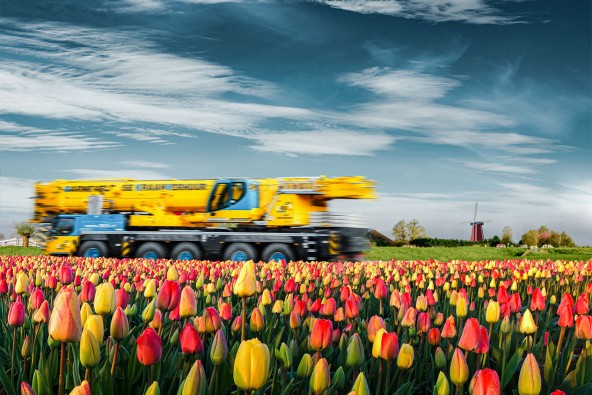
More than just tulips...
The same is likely to be true for machines built by our competitors. If you travel through what, in terms of area, is a fairly small country, moving westwards towards the North Sea, there is no way of missing the steady increase in large construction machines and cranes of all types. However, the undisputed Mecca for crane spotters is the port metropolis of Rotterdam. Moving around the site and hinterland of what is by far the busiest seaport in Europe, occupying an area of around one hundred square kilometres, you will find it difficult to travel far without seeing a crane.

Han Rekers, Managing Director of Liebherr Nederland B. V.
There are around 900 mobile cranes bearing the Liebherr logo currently in action in the Netherlands. If we add the mobile construction cranes built at the Liebherr plant in Biberach to this total, there are well over one thousand of our machines travelling through the bustling kingdom in Western Europe. Over the past 50 years, in addition to a significant number of mobile cranes, we have also supplied a very large number of large and small crawler cranes to what is a very important market for us. On the basis of the country’s historical background of a large maritime and colonial power, the Netherlands has now become established as one of the most competitive exporting economies in the world as well as having a significant, global transport and heavy haulage industry. In 2019, the country occupied position four in the list of major exporting countries in the world behind China, the USA and Germany, but in front of Japan. Furthermore, some major companies in the Rotterdam area, so-called bare rental companies, have specialised in renting significant numbers of mobile and crawler cranes to customers around the world. It hardly comes as a surprise, therefore, that an above average number of new machines leave our crane factory to travel to the Netherlands.
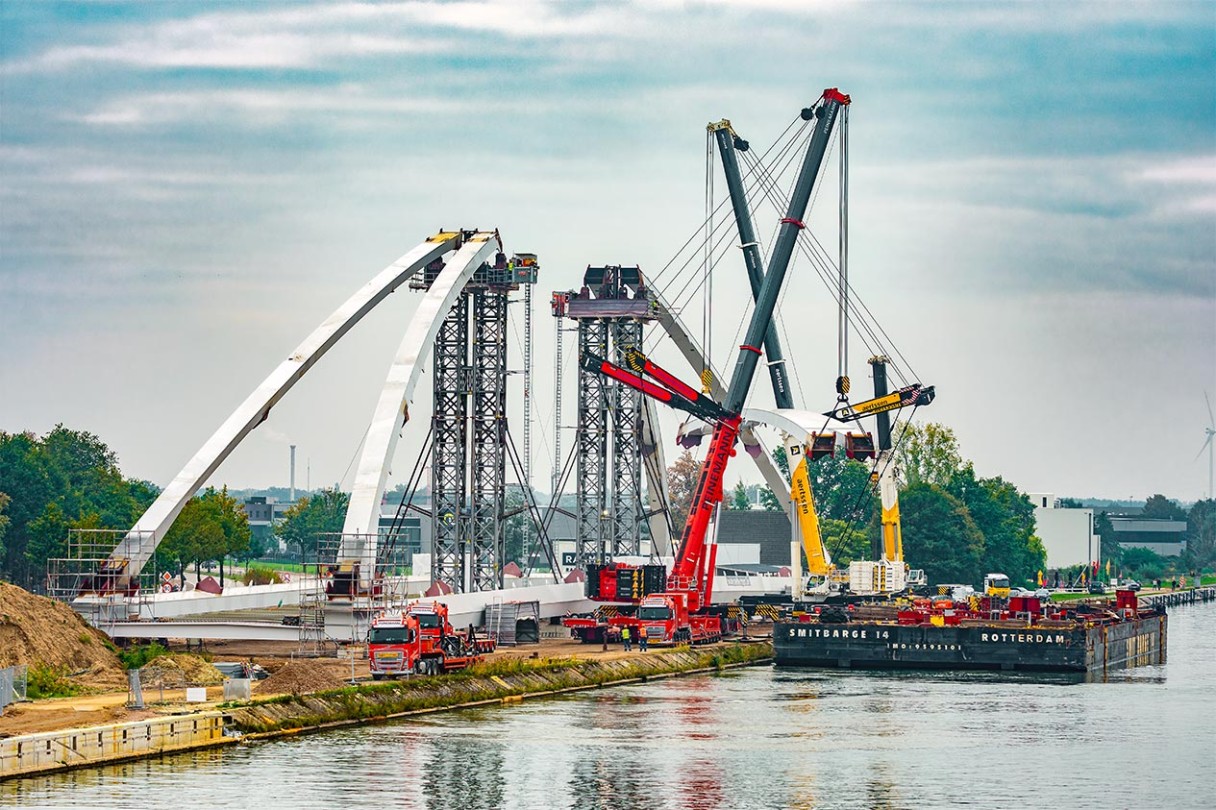
Guest appearance – many of the Dutch crane contractors are active throughout Europe or at least well beyond their own borders. Here you can see an LTM 1750-9.1 from Dutch contractor Peinemann giving a helping hand with the installation work for an arched bridge in Beringen, Belgium. The white and yellow Liebherr mobile crane of the same type is owned by Belgian group Aertssen.
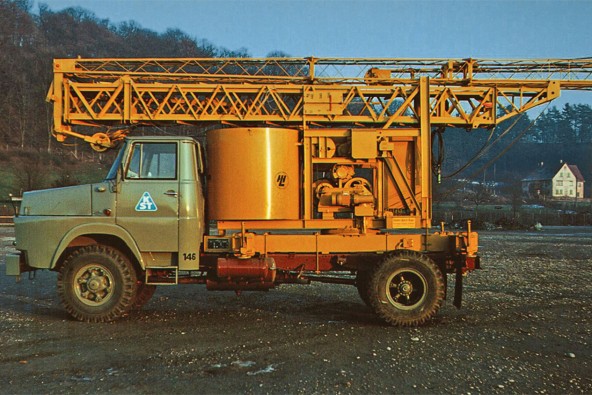
At the end of the 1950s, our founder Hans Liebherr realised that a crane system which was as mobile as possible would deliver major benefits and as a result built a small tower crane on a truck chassis in the form of the KA series. The KA vehicles had an empty tank which could simply be filled with water, gravel or sand at the site for ballasting the crane. These early mobile construction cranes show that we have always been focused on building cranes which are uncompromisingly practical.
High tech crane-based engineering
One of these partners, which also develops some enormous lifting gear, is global heavy haulage contractor Mammoet, based in Utrecht with a workforce numbering over 6,000 all over the world. The group, whose machines have a striking red livery, was also responsible for commissioning the first model of our Liebherr LR 13000 around eight years ago. This crane is the most powerful conventional crawler crane in the world, and we are currently manufacturing the sixth version of it, was used in the construction of the largest big wheel in the world in Dubai and handled gross loads of over one thousand tonnes for the assembly of massive jack-up legs for an offshore installation vessel in Bremerhaven.
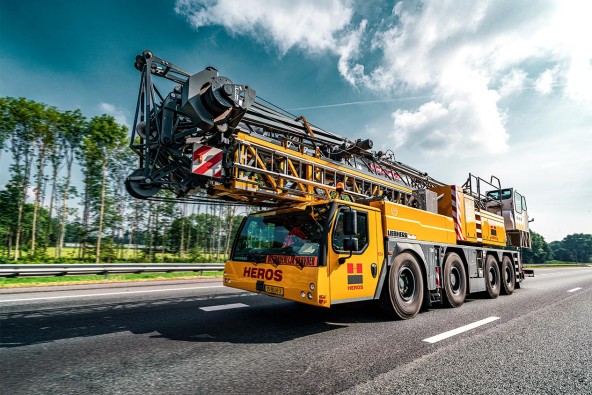
An MK 88 Plus mobile construction crane owned by our customer Heros.
The fact that Netherlands is home to some impressive crane and technology-based engineering and that the country does not just rely on picturesque or cute clichés such as tulips, cheese or windmills is also shown by the history of mobile and folding construction cranes. The development of these mobile construction cranes as we know them today originated in the Netherlands where they received a massive boost from a well-known manufacturer. We now also have some very successful representatives in that market in the form of the Liebherr mobile construction cranes in the MK series whose undercarriages are made here in Ehingen. Over one thousand MK cranes have now left the assembly belts at our sister plant in Biberach, with almost one in five of them being delivered to our Dutch customers.
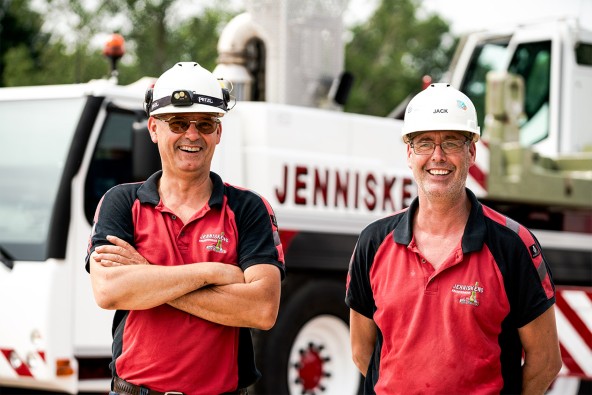
Jack Heldens, rechts im Bild neben seinem Kollegen Eric Claasen, der den LTM 1230-5.1 steuert.
One-quarter of the Netherlands is below sea level
One of the main reasons for the high density of construction sites and the resultant high number of cranes in our neighbouring country is without doubt the massive infrastructure that has to be maintained and permanently expanded there as a result of the country’s geographical peculiarities. The Dutch have reclaimed large parts of the country from the North Sea using an incredible amount of technology. In fact, around one-quarter of the country is actually below sea level. That means that regions along the coast, in particular, must be kept dry permanently. The Dutch Directorate-General for Public Works and Water Management, known as the “Rijkswaterstaat”, currently manages a total of 1,500 kilometres of dams, dykes and weirs, which are equipped with countless pumping stations to protect large swathes of the country from flooding and storm surges. Throughout the country, there are thousands of bridges, viaducts and sluice systems, which have to be modernised and maintained. Mobile and crawler cranes are essential for all this type of work, of course.
Some of the photographs on these pages have been taken by Jelco Stouthandel, a crane operator employed by Peinemann, who has kindly made them available to us. He is a passionate photographer and a genuine crane fanatic who spends much of his free time looking for unusual jobs involving mobile and crawler cranes.
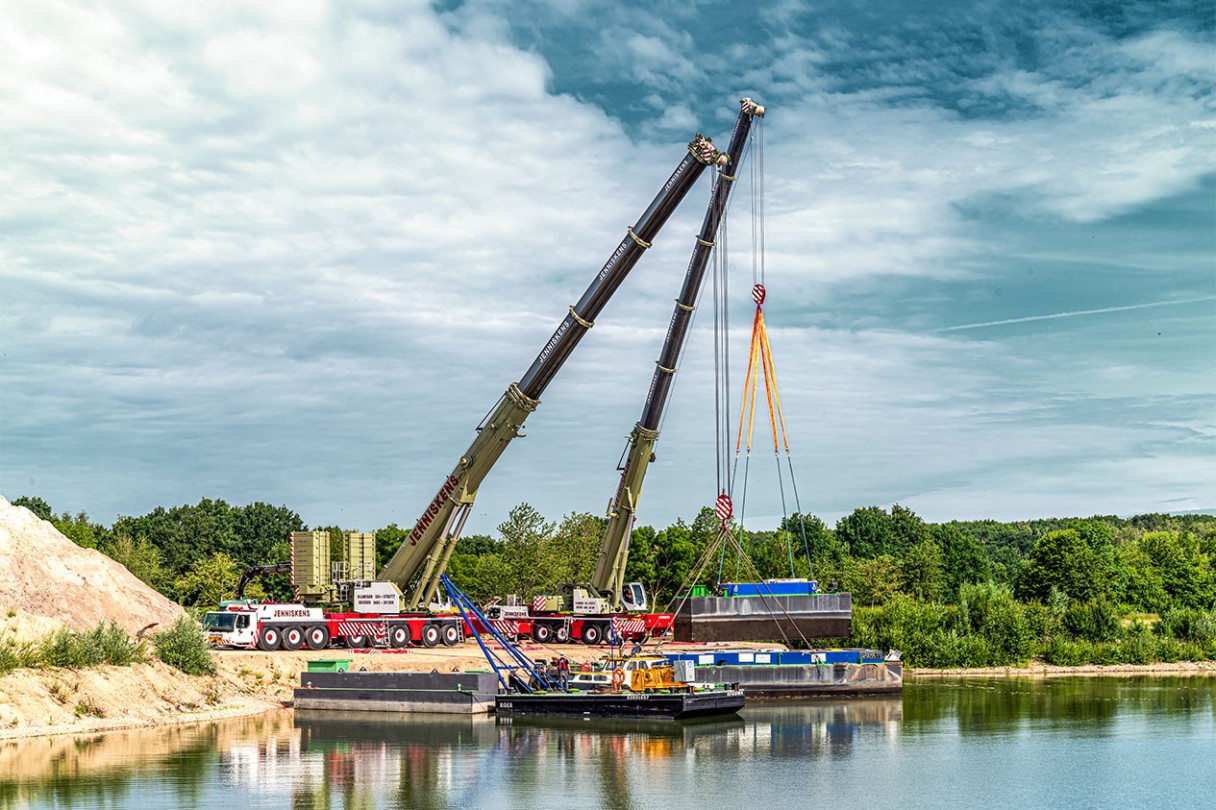
The crane is absolutely fantastic. Without the VarioBallast® system on the LTM 1450-8.1, we would have been unable to complete some of the work on constricted sites with the crane.
Teamwork
Jenniskens Kraanverhuur, based in Nimwegen, is shown here dismantling a floating sand dredger on a lake in the south-west of the country. An LTM 1230-5.1 is currently hoisting a massive floating section of the vessel out of the quarry lake. The LTM 1450-8.1, shown on the left, has become an extremely popular mobile crane, even outside the kingdom’s borders. Over a dozen models of this modern 8-axle Liebherr mobile crane can now be found on roads in the various Dutch provinces.
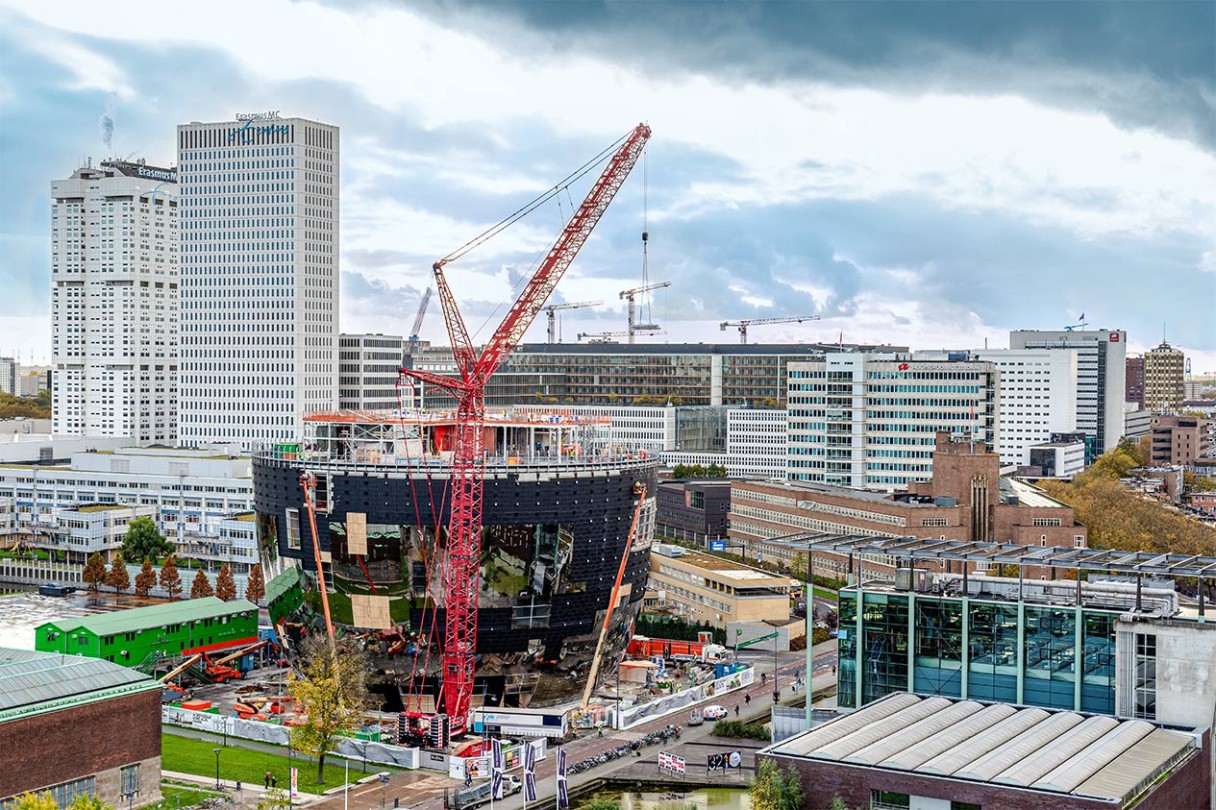
Futuristic – Mammoet’s Liebherr LR 1500 crawler crane in action building a modern art depot for a museum in the centre of Rotterdam.
This article was published in the UpLoad magazine 01 | 2021.

